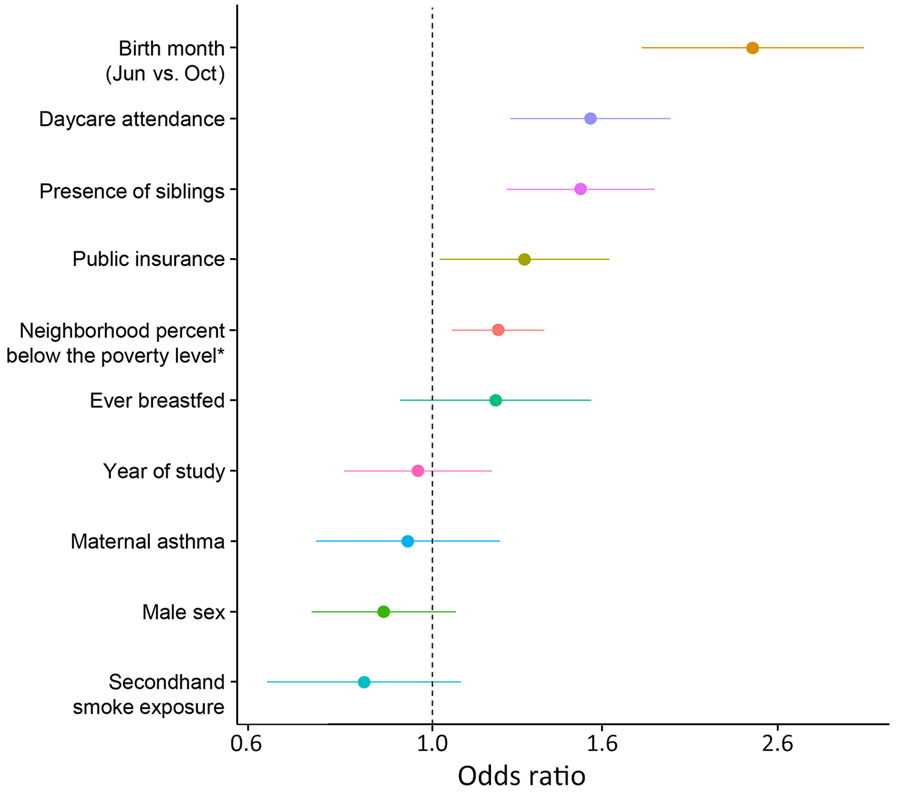Volume 30, Number 10—October 2024
Research Letter
Respiratory Syncytial Virus Prevalence and Risk Factors among Healthy Term Infants, United States
Figure 2

Figure 2. Respiratory syncytial virus infection risk factors in the first year of life in study of RSV among healthy term infants, United States. Adjusted odds ratios were estimated using multivariable logistic regression, referent is October birth month. Dots indicate odds ratio and horizontal line 95% CI. Dashed vertical line indicates the null effect. Asterisk indicates residence in a census tract with increasing percentage of people below the poverty level (interquartile range difference).
Page created: September 05, 2024
Page updated: September 24, 2024
Page reviewed: September 24, 2024
The conclusions, findings, and opinions expressed by authors contributing to this journal do not necessarily reflect the official position of the U.S. Department of Health and Human Services, the Public Health Service, the Centers for Disease Control and Prevention, or the authors' affiliated institutions. Use of trade names is for identification only and does not imply endorsement by any of the groups named above.